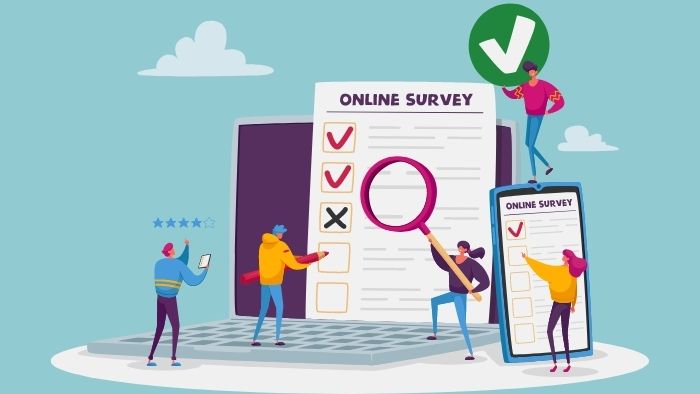
HR Guide: All You Need to Know About Pulse Surveys
Are You Hiring?
Find candidates in 72 Hours with 5+ million talents in Maukerja Malaysia & Ricebowl using Job Ads.
Hire NowWhen it comes to managing employees, it is essential to know how to get their valuable feedback as it is vital to the health of your organisation.
Usually, the management would resort to conventional methods, such as employee engagement surveys. However, pulse surveys have become popular as of late.
The top leaders understand the pulse survey's power as it is the key to unlock higher employee participation. Did you know that the average employee engagement survey's response rate is only 33%? Pulse surveys, on the other hand, enjoy an 85% average response rate.
Pulse survey? What is that?
A pulse survey is a short and regular set of questions given to employees. The survey is conducted to continuously gain employees' opinions on job-related roles, communication and work relationships, and the overall working environment.
How different are pulse surveys from the yearly employee engagement surveys?
1. More frequent
The leaders should perform pulse surveys more regularly, whereas annual employee engagement surveys only occur once a year. Pulse surveys may be weekly, monthly or quarterly, and they can be standalone or tied to particular learning material.
2. More specific
Pulse surveys usually focus more on a particular topic or a set of closely related subjects. Annual employee engagement surveys usually cover a broader range of subjects.
3. Shorter
Pulse surveys usually have from 1 to 16 questions per session. An annual employee engagement survey takes more time as it covers more subjects. The more frequent the pulse, the shorter the survey.

A pulse survey is easier to manage if conducted online.
Why is pulse survey more effective?
1. Brief and frequent
One main reason pulse surveys are effective is that they are short. Employees usually have a sizable workload, so it can be distracting for them to be bombarded with many questions.
2. Hyper-focused and contextual
Pulse surveys produce better context for the changes of any conditions. Since they are performed frequently, the employer can gauge how certain aspects of the workplace respond to change.
For example, if a new technology solution is introduced into the work process after a complaint, the employer will know how quickly it affects them.
The repetitive nature of this survey also allows staff to focus on a particular topic.
3. Improves employee wellbeing
Pulse surveys make employees feel more cared for. If a leader focuses on getting regular feedback from staff, they may make fewer changes, but nearly all of them will resolve issues adequately.
An organisation that regularly makes changes may not necessarily keep its employees happy, especially if it is imposed without their input.
4. Smooth to conduct, easy to act on
Pulse surveys also enable an organisation to better use digital technology since they can be sent to workers remotely over the internet using a cloud system.
It makes the administration smoother for everyone involved, be it the survey recipients or those studying the data generated.
5. Builds company culture
Pulse surveys help to foster company culture and create more cohesion among employees. As staff continuously contribute to many topics together, they may bond over those topics during their own time.
When they interact with each other more, especially in an organic way, they are more likely to be effective as teammates when solving work-related issues.

Pulse surveys should be accessible via smartphones to make it more convenient for employees.
How to conduct pulse surveys
1. Choose questions to ask
Start by identifying the survey's primary goal. For instance, to find out how employees are adjusting to a new merger. From there, you can work out questions about workspace, office supplies distribution etc.
2. Announce the survey
You want to let the staff know when the survey will happen, how long it will last and how they can participate. You can also let the workers know what you are trying to achieve with this survey.
3. Begin the survey
You should distribute the survey at a convenient time using the most suitable method that ensures maximum participation from the employees.
4. Check the responses
Create a simple system to tally any quantitative data, establish patterns in the results, focus more on the areas where employees say you are falling short and pick out actionable insights.
5. Share the survey's results with the team
It is crucial to provide the employees with a general overview of your survey's findings, and it creates more certainty on whether the employees' message got through to you clearly.
It also helps you set a starting point for your response which helps employees understand what you will improve first.
6. Time to act
Though it may not be a part of the survey, it is a part of the survey journey as the pulse approach is continuous.
A survey without any action would only make employees feel like it's just theatrics to trick them into thinking that you care and decreases their morale.
7. Evaluate and repeat
After you have taken action, follow it up with a survey to measure its progress. Keep what works, put it in rotation, throw away what doesn't work and find other ways to solve leftover problems.
Be aware of your end goal and how close you're getting to the finish line.
Today, pulse surveys are a critical part of the success of modern businesses. Are you prepared to deploy pulse surveys in your business and experience valuable feedback and an engaged and motivated workforce?
Source: Edume
Articles that might interest you
No Entry of Foreign Workers Until December 31, 2021
What You Need to Know About EPF's i-Saraan
EPF Launches Two Initiatives to Help Employers Manage Cash Flow

